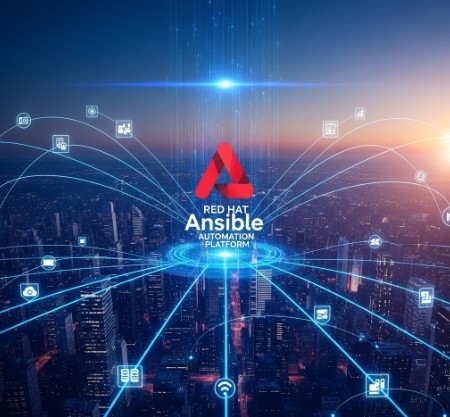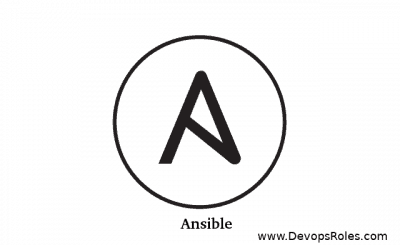The Ansible Automation Framework has rapidly become a cornerstone of IT automation, streamlining complex tasks and improving operational efficiency. However, its capabilities are constantly evolving. This article delves into Red Hat’s recent expansions of the Ansible Automation Framework, exploring its enhanced features, broadened integrations, and implications for system administrators, DevOps engineers, and cloud architects. We will examine how these advancements address current challenges in IT operations and provide a practical understanding of how to leverage the expanded capabilities of the Ansible Automation Framework for improved automation and efficiency.
Table of Contents
Enhanced Automation Capabilities within the Ansible Automation Framework
Red Hat’s ongoing development of the Ansible Automation Framework focuses on enhancing its core automation capabilities. This includes improvements to core modules, increased performance, and the introduction of new features designed to simplify complex workflows. These improvements often translate to faster execution times, reduced resource consumption, and easier management of increasingly sophisticated automation tasks.
Improved Module Functionality
Recent updates have significantly improved the functionality of existing modules within the Ansible Automation Framework. This includes enhanced error handling, improved logging, and support for a wider range of operating systems and cloud providers. For example, the ansible.builtin.yum module has seen significant upgrades to manage package updates more efficiently and robustly, providing better control and error reporting. The enhanced capabilities mean that managing system updates and configurations is now smoother and more reliable.
Performance Optimizations
Performance has been a key area of focus. Red Hat has implemented several optimizations, resulting in faster playbook execution times and reduced resource utilization. These performance gains are particularly noticeable when managing large-scale deployments or complex automation workflows. The use of optimized data structures and improved network communication protocols contributes significantly to these improvements in speed and efficiency.
New Automation Features
The Ansible Automation Framework continues to evolve with the addition of new features designed to simplify tasks and enhance flexibility. For instance, improvements to the Ansible Galaxy integration facilitate easier discovery and management of community-contributed roles and modules, further expanding the capabilities of the framework. This means users can readily access and incorporate pre-built solutions to automate various IT processes, saving time and effort.
Expanded Integrations and Ecosystem
Red Hat’s strategy extends beyond improving the core Ansible Automation Framework. A key focus is expanding its integrations with other technologies and platforms, creating a richer ecosystem that allows for more seamless and comprehensive automation across various IT domains.
Cloud Provider Integrations
The Ansible Automation Framework boasts strong integration with major cloud providers such as AWS, Azure, and Google Cloud. These integrations allow users to automate the provisioning, configuration, and management of cloud resources seamlessly within their existing automation workflows. This tight integration enables greater agility in cloud-based deployments and simplifies cloud management tasks.
Containerization and Orchestration Support
With the rise of containers and container orchestration platforms like Kubernetes, Red Hat has strengthened the Ansible Automation Framework‘s capabilities in this area. Ansible modules and roles facilitate automating the deployment, management, and scaling of containerized applications on Kubernetes clusters, streamlining containerized workflows and improving deployment speed and reliability.
Integration with Other Red Hat Products
The Ansible Automation Framework integrates smoothly with other Red Hat products, creating a cohesive automation solution across the entire IT infrastructure. This integration enhances management capabilities and reduces operational complexity when using various Red Hat technologies, such as Red Hat OpenShift and Red Hat Enterprise Linux.
The Ansible Automation Framework in Practice: A Practical Example
Let’s illustrate a basic example of using Ansible to automate a simple task: installing a package on a remote server. This example uses the yum module:
---
- hosts: all
become: true
tasks:
- name: Install the httpd package
yum:
name: httpd
state: present
This simple playbook demonstrates how easily Ansible can automate software installations. More complex playbooks can manage entire infrastructure deployments and automate intricate IT processes.
Addressing Modern IT Challenges with the Ansible Automation Framework
The expanded capabilities of the Ansible Automation Framework directly address many modern IT challenges. The increased automation capabilities improve operational efficiency and reduce the risk of human error, leading to significant cost savings and improved uptime.
Improved Efficiency and Reduced Operational Costs
Automating repetitive tasks through the Ansible Automation Framework significantly reduces manual effort, freeing up IT staff to focus on more strategic initiatives. This increased efficiency translates directly into lower operational costs and improved resource allocation.
Enhanced Security and Compliance
Consistent and automated configuration management through Ansible helps enforce security policies and ensures compliance with industry regulations. The framework’s ability to automate security hardening tasks reduces vulnerabilities and strengthens the overall security posture of the IT infrastructure.
Faster Deployment and Time to Market
Faster deployments are a direct result of leveraging the Ansible Automation Framework for infrastructure and application deployments. This acceleration of the deployment process reduces the time to market for new products and services, providing a competitive edge.
Frequently Asked Questions
What are the key differences between Ansible and other configuration management tools?
While other tools like Puppet and Chef exist, Ansible distinguishes itself through its agentless architecture, simplified syntax (using YAML), and its agentless approach, making it easier to learn and implement. This simplicity makes it highly accessible to a broader range of users.
How can I get started with the Ansible Automation Framework?
Getting started with Ansible is straightforward. Download Ansible from the official Red Hat website, install it on your system, and begin writing simple playbooks to automate basic tasks. Red Hat offers comprehensive documentation and tutorials to guide you through the process.
What kind of support does Red Hat provide for the Ansible Automation Framework?
Red Hat provides robust support for the Ansible Automation Framework, including documentation, community forums, and commercial support options for enterprise users. This comprehensive support ecosystem ensures users have the resources they need to successfully implement and maintain their Ansible deployments.
How secure is the Ansible Automation Framework?
Security is a high priority for Ansible. Regular security updates and patches are released to address vulnerabilities. Red Hat actively monitors for and addresses security concerns, ensuring the platform’s integrity and the security of user deployments. Best practices around securing Ansible itself, including proper key management, are crucial for maintaining a robust security posture.

Conclusion
Red Hat’s ongoing expansion of the Ansible Automation Framework reinforces its position as a leading IT automation solution. The enhancements to core functionality, expanded integrations, and focus on addressing modern IT challenges solidify its value for organizations seeking to improve operational efficiency, security, and agility. By mastering the capabilities of the Ansible Automation Framework, IT professionals can significantly enhance their ability to manage and automate increasingly complex IT environments. Remember to always consult the official Ansible documentation for the latest updates and best practices. Ansible Official Documentation Red Hat Ansible Ansible Blog. Thank you for reading the DevopsRoles page!

